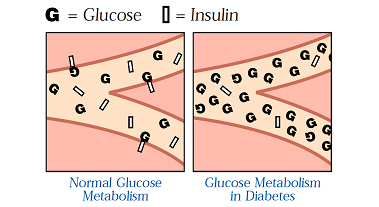Introduction
If you’re reading this article, chances are you’ve been told that you have diabetes. Maybe you’re unsure what diabetes actually is, or what impact it will have on your life. This article will help you find the answers to those and other questions.
Here’s some good news right up front: you can successfully manage your diabetes. And, you’ll have help along the way. The members of your “diabetes care team” - your doctor, nurse, diabetes educator, dietitian and pharmacist - can all answer your questions and give you support. Many, many people of all ages live full, active lives even though they have diabetes. You can learn to do the same.
The first thing you need to know is what diabetes is, and how it affects your body. To understand diabetes you’ll need to know a few medical terms. At first these may seem confusing, but don’t worry. As you learn a little more about the disease, the terms will start to make sense.
Diabetes Insulin and Glucose
To understand diabetes you need to learn about glucose and insulin. These are two substances produced by the body. Your body makes glucose from the foods you eat and releases it into the bloodstream. Glucose is a form of sugar. It’s also the main energy source for your body. But glucose has to get from the bloodstream into your body’s cells to supply power. That’s where a hormone called insulin comes in.

Insulin is produced by special cells (called islet or beta cells). These cells are in an organ called the pancreas, located near the stomach. Insulin allows the glucose to get inside your cells where it can be used for energy.
If you have diabetes, your body isn’t producing any insulin, not enough insulin or it doesn’t respond properly to the insulin it does produce. Without insulin, your body can’t process glucose and turn it into energy.
To use a simple analogy, if the cells in your body were cars, glucose would be the fuel that makes them go. But the body has to produce insulin to get glucose where it’s needed – inside the cells. Not only that, but cell walls need to be able to respond to insulin by moving glucose from the bloodstream into the cells. When part of this process breaks down, the result is diabetes.
Depending on what part of the process is affected, the result can be either type 1 or type 2 diabetes.
Let’s look at two different forms of diabetes and see what causes them.
To View More Helpful Diabetes Articles In This Series - Click here to receive a weekly email summary.
- How many types of diabetes are there?
- The importance of managing diabetes
- How well are you managing?
- Where to find diabetes support
- Why track
- What to track
- How to track diabetes simply for busy lives
- Living with type 1 diabetes
- Insulin pumps
- Living with insulin pumps and giving an injection


